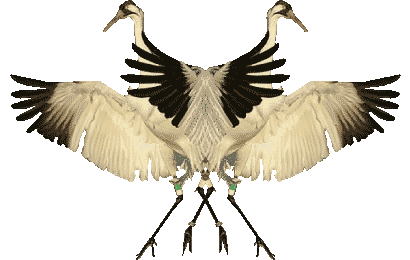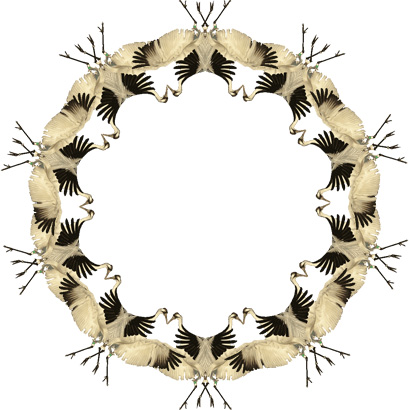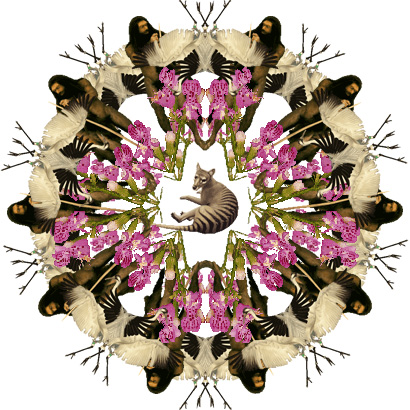It’s only natural for species to emerge and disappear. But our own species (Homo sapiens) is remarkable for its contributions to others’ disappearances (read: extinction). The Dodo of Mauritius is a most famous example of our influence. Only slightly less so is the Carolina Parakeet, which fairly recently ranged over much of the contiguous United States. Yes, we had parakeets in our trees! (Now we barely have trees.)

We have been direct in many cases, hunting entire species to death. The last Quagga—a plains zebra indigenous to South Africa—died in a zoo in 1883, its brethen killed off. Hunters in Australia were paid to eradicate the Tasmanian Wolf (a marsupial), and were successful—its extinction occurring in the last century.
Sometimes we’re a little indirect. A domestic cat wiped out the entire subspecies of Stephens Island Wren shortly after discovering it. But it was a human lighthouse-keeper that set it loose.
Many species are only becoming extinct. The Aye-Aye—a lemur with an exceptionally long middle finger—seems to have a built-in message for those who would destroy its forest. The Chinese Cycas was considered endangered as soon as it was discovered in 1996. The Indigo Macaw is endangered in part from livestock trampling its main diet of Licuri Palm. Long-Spurred Mint suffers the stomp of boots.

All of this is shared knowledge in our class of 23 sophomores at North Carolina State University. Not one scientist among us, just designers interested in species reclamation. How did we do it, when genetic code is lost? Virtually. The assignment was this: Imagine possessing the ability to find lost species and reintroduce them into our world. Alas!, only in our digital world can we do it. The difference is a code shift, from DNA to HTML. Each student adopted a lost (or endangered) species of their own discovery. Then they molded them into patterns, so they could—this time around—continue on infinitely. These patterns layer into a great aggregate pattern (or ecology).
Some students told stories in their selections: the Stephens Island Wren pattern includes the cat which wiped it out (Weston); the Long-Spurred Mint includes the boot-prints that are its scourge (Gurnsey); the Indigo Macaw is patterned with the Licuri Palm it so needs for sustenance (Hill); and the Quetzal is just damned shot through with arrows (Gusmann).
In the appropriately transient space of the internet lies our monument to endangered and lost species.

The monument is the aggregate pattern. The visitor is left to activate the species and construct a lost ecology. Through layering, species emerge and disappear, as they do in history. Interwoven, they form new patterns, contributing to an amassed arrangement with a rapidly increasing interval of repetition. The result is a practically non-repeating pattern. This is an ecological metaphor: the individual units greatly enrich the entire system, even beyond their means.
The students have my admiration because they birthed something wonderful. The individual units are lovely, yes, but there’s something beyond that, something I experienced when I first collected these patterns and activated them one by one, building a unique ecosystem. For the students, the sum is greater than the parts. Seeing these images actively come together was simply breathtaking. And it can’t be described by any single state. It is a process; one of emergence and disappearance.
The Emerging Pattern of Species Loss
Pattern-makers: Darwin (yes, Darwin) Campa, Britt Cobb, Lena Bondar, Ariana Farquharson, Maria Vallejo, Rich Gurnsey, Megan Jett, Ashley DeLappe, Caroline Chamblee, Henry Lancaster III, Lydia Hill, Nancy Jin, Mark Gusmann, Ben Dodd, Amanda Weston, Kayce Lomas, Heath Beckett, David Mitchell, Leigh Johnson, Brian Quick, Justin Morgan, Jessica Straw, and Kyun Hur.
Patterns developed in Matthew Peterson’s course at NC State; site constructed with KT Meaney of Terms & Conditions.






Finding projects to give students surrounding non-sexy themes like politics, sustainability or, in this case, endangered species is specifically hard and piquing their interest even harder. This seems like an interesting project in that it is built by the whole class, and the monument itself is only as good as the collaborative effort; the juxtaposition of two or three great patterns can be disturbed by one non-great pattern. I would love to see a conscious effort in creating posters or coasters or stickers like the last graphic example in this post, which looks more interesting than the monument, because the layering is more focused and less random. (And by random, I'm reacting to the non-aligning patterns on the site, it would be great to have assigned students a X by X square that would limit their artwork, so that the layering resulted in a more integrated manner – hopefully this makes sense).
As a teacher who gives purely functional, and purposefully focused assignments (logo for this, book about that, poster with this many colors) it's great to see "alternative" projects.
On Apr.04.2007 at 02:33 PM